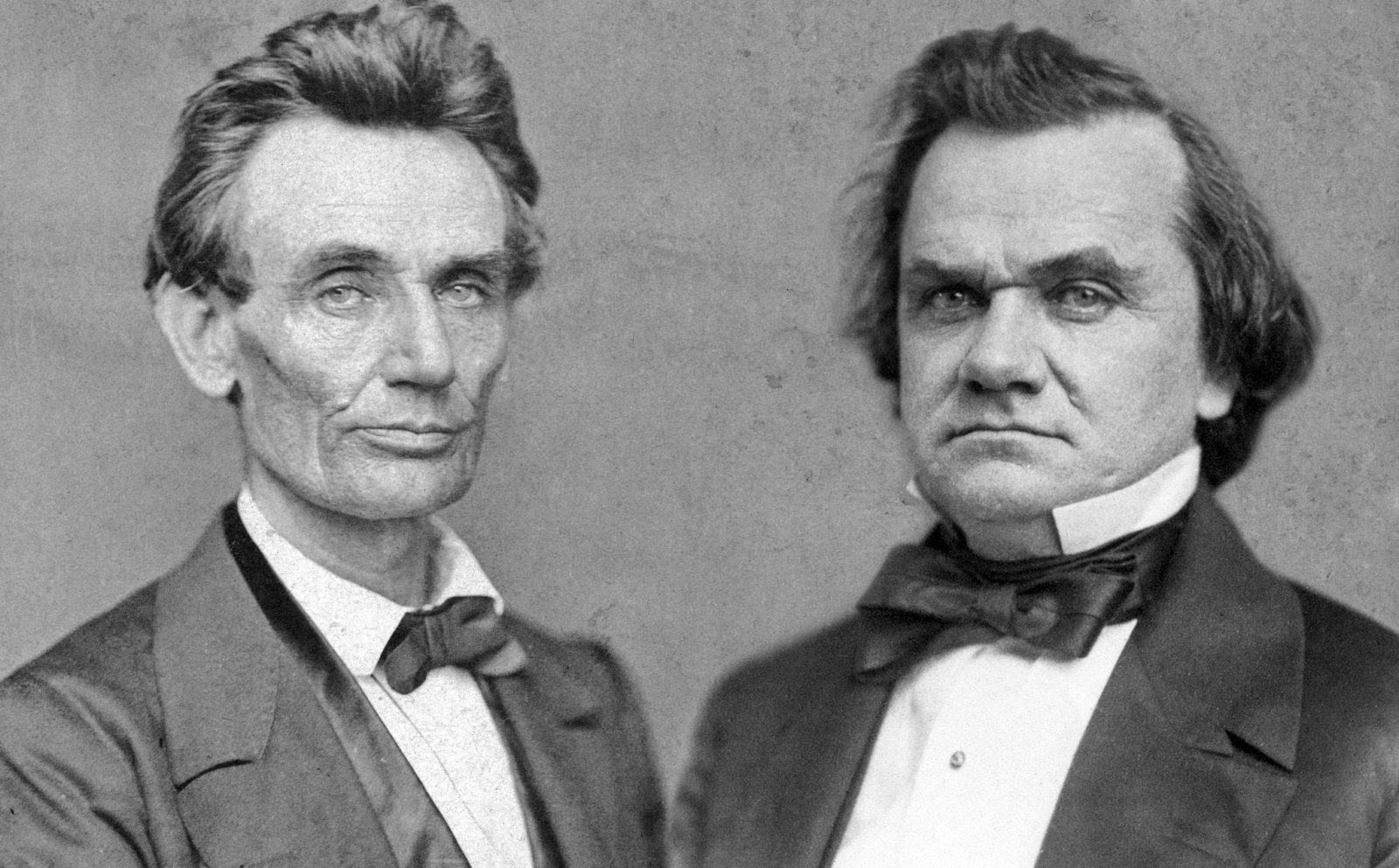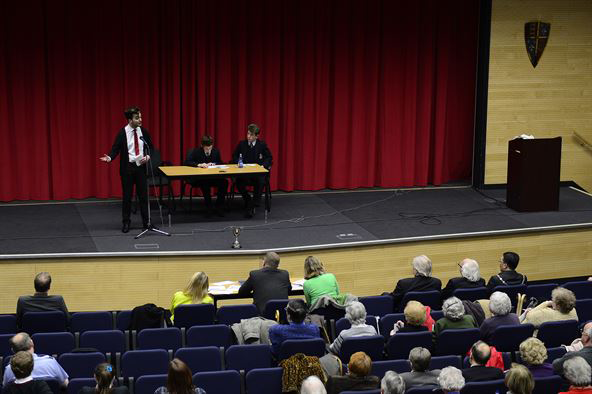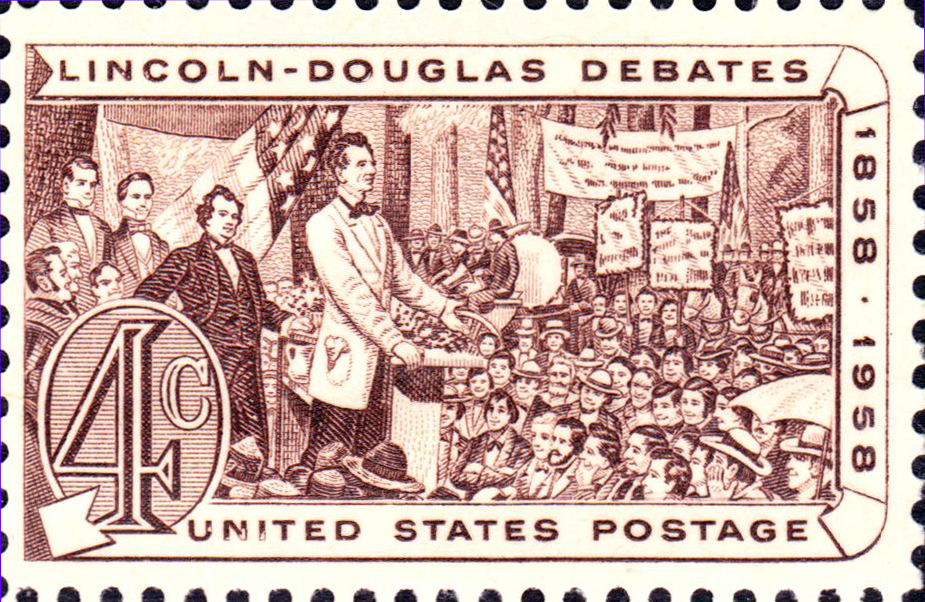Lincoln-Douglas Debates
by Andy Boyd
Today, up for debate. The University of Houston presents this series about the machines that make our civilization run, and the people whose ingenuity created them.
It was 1858, three years before the outbreak of the Civil War. At issue was the future of slavery. And the two candidates who in turn took their place at the podium were incumbent senator Stephen Douglas of Illinois, and his political challenger, Abraham Lincoln.

Abraham Lincoln and Stephen Douglas Photo Credit: Wikimedia
The Lincoln-Douglas debates took place over a period of four weeks at seven locations scattered throughout Illinois. The opening speaker was allowed sixty minutes, the second ninety minutes, then the opening speaker concluded with a thirty-minute rebuttal. Lincoln and Douglas took turns as opening speaker as they moved from venue to venue.
The debates have carved a place in history for many reasons. Public emotions over slavery were reaching a boiling point, leading transcripts of the debates to be published countrywide. The debates were also instrumental in establishing Lincoln's presence on the national stage. And the debates are sometimes longingly remembered as an exemplar of civil discourse.
My first introduction to the Lincoln-Douglas debates wasn't in a history class, but in a competitive debate group I'd been roped into by a young, energetic teacher. Here I learned the art of what we now call Lincoln-Douglas debating. I quickly learned that debate as practiced in school wasn't a free-for-all, but a regimented exercise. Point. Counterpoint. Logic. Rules. At times the activity seemed more like a mathematical exercise than an effort to sway the position of anyone.
Lincoln-Douglas debates traditionally focus on a topic related to morals and values. Two contestants are presented with a statement such as, "Resolved: A just government ought to prioritize civil liberties over national security." One contestant argues the affirmative and one the negative. They follow a carefully prescribed structure of timed arguments and rebuttals, and are judged by their ability to make a logical case and refute the opponent's. The same debate topics are used in competition for as much as a year, so debaters must learn to argue both sides of an issue.

Lincoln-Douglas debating Photo Credit: Department of Defense
And that's one of the beauties of formal debate - learning to argue in favor of something you don't believe in. It requires separating belief from what is and isn't a good argument. It also helps us gain a better understanding of what the other side may be thinking.
Of course, Lincoln and Douglas weren't engaging in an intellectual exercise. They were political candidates out to win votes. Barbs and populist rhetoric were on full display. The debates were also a public spectacle, attracting tens of thousands of spectators who raucously cheered and jeered. Yet the men's arguments display a refreshing degree of thoughtful reflection on what was an emotionally divisive issue for the country, even if today we'd find some of the arguments repugnant. As today's students engage in Lincoln-Douglas debates, they're engaging in the better part of what Lincoln and Douglas did so many years ago. And in the process, they're learning skills vital for a democracy to flourish.

Stamp commemorating the 1958 Lincoln-Douglas Debates Photo Credit: Wikimedia
I'm Andy Boyd at the University of Houston, where we're interested in the way inventive minds work.
(Theme music)
Fergus Bordewich. "How Lincoln Bested Douglas in Their Famous Debates." From the Smithsonian website: http://www.smithsonianmag.com/history/how-lincoln-bested-douglas-in-their-famous-debates-7558180/. Accessed May 30, 2017.
Lincoln-Douglas Debate. From the Wikipedia website: https://en.wikipedia.org/wiki/Lincoln%E2%80%93Douglas_debate. Accessed May 30, 2017.